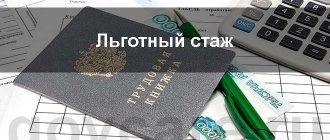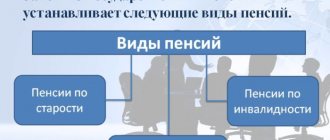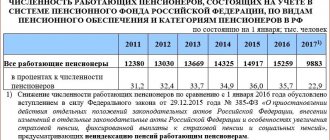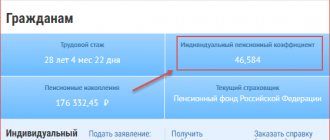Source>>>
There has been a lot of talk about pensions in the USSR lately. All reasoning has two emotional overtones:
• a rosy one, that all Soviet pensioners received a decent pension (100-120 rubles) and lived happily ever after; • black, that pensioners in the SSS literally survived on 30 rubles a month.
The truth, as usual, is somewhere in the middle. Let's remember what real Soviet pensions were like and finally compare them with modern ones. In our research we will rely on eyewitness accounts (fortunately, they still exist), on documents and information from the Soviet press and books.
History of pensions in the Soviet Union
A very interesting fact is that pensions were provided only to citizens who were not found to have committed bad deeds: that is, the person was not involved or dismissed under the article. Those who had any misconduct had the right to file a petition with the state or could try to “whiten” their reputation by performing their job duties perfectly. Pension payments were not available to monks and citizens who left the country forever.
By the way! There were practically no pension payments after the revolution of 17.

As a rule, pensions were issued to citizens who were not found to have committed any offenses
When the USSR was formed, any royal pensions immediately disappeared. For a very long time, many Soviet workers could not obtain old-age payments, since they were assigned only to certain categories of citizens.
For example, in August 18, pensions were introduced for disabled Red Army soldiers, in 23 – for old Bolsheviks, in 28 – for workers in the mining and textile industries.
By the way! Only in 1930, the Soviet Union adopted the “Regulations on pensions and social insurance benefits,” and seven years later, pension payments were provided to any city workers and employees.

In 1930, the “Regulations on pensions and social insurance benefits” were adopted.
How much did you receive in the USSR military pensions?
Pensions in the USSR: Social reforms 1917-1990. The creation of social security bodies of the Soviet period began literally in the first days after the October Revolution.
So, already on October 29 (November 11, new style) 1917, the head of the new government, Vladimir Lenin, signed a decree on the creation of the People's Commissariat of State Charity.
Already on October 30 (November 12), Lenin had a conversation with Alexandra Kollontai, who, after extensive experience in party work at the beginning of the 20th century, was invited to the post of first minister in the Soviet government. The choice of candidate for the post of People's Commissar of Charity was not accidental.
Already on October 30 (November 12), Lenin had a conversation with Alexandra Kollontai, who, after extensive experience in party work at the beginning of the 20th century, was invited to the post of first minister in the Soviet government. The choice of candidate for the post of People's Commissar of Charity was not accidental.
Pension size in the Soviet Union (USSR)
Alexandra Kollontai headed the People's Commissariat of State Charity for only a few months: from October 30, 1917 to March 19, 1918.
But even in such a short period of time, the activities of the first People's Commissar of Charity played a crucial role in the formation of guardianship bodies in the Soviet Republic - in the emergency conditions of two wars (world and civil), with a huge flow of wounded soldiers and people left without a livelihood.
In August 1918, pensions were introduced for disabled people of the Red Army, and in 1923 - for party activists (“Old Bolsheviks”). In 1928 - for workers in the mining and textile industries.
Universal pensions for urban workers and employees will be introduced only in 1937.
How was pension formed in the Soviet Union?
- Since 1967, the amount of pension contributions was increased, but already in the 80s the pension was gradually decreasing, since there was no functioning mechanism for annual indexation.
- In the 90s it was necessary to change the reform for a number of reasons:
- active aging of the country's population;
- reduction in the working population;
- dissemination of the early retirement system;
- low income;
- falling oil prices;
- reduction in production volume;
- budget deficit.
- Since 1987, changes were made according to which every citizen could voluntarily replenish their pension savings.
- In 1990, the Pension Fund (PFR) was created.
- Work experience Pension contributions in the USSR were assigned after 20 years of experience (among the female population) and 25 years (among the male population).
Community “back in the ussr”
To calculate the pension salary, 2 options were used:
- At the request of the future pensioner, one of the five-year plans was selected, which was included in the ten years of continuous professional activity, and the average salary in it was calculated.
- The basis was the salary a person received one year before reaching retirement age.
Pension in the 1980s In 1980, the number of pensioners in the Soviet Union increased significantly. However, this did not prevent the state from paying their pensions on time at the same level, taking into account inflation, as before.
The average pension salary in these years was 67 rubles.
How much is the military pension?
In the absence of insurance contributions from citizens' income, pensions were financed from public consumption funds.
Sources of pension payments were formed from the state budget and deductions from the wage fund of enterprises (the deduction rate ranged from 4% to 12%, depending on the field of activity).
Another distinctive feature of the Soviet pension system is the low retirement age: 60 years for men and 55 years for women.
This level has remained unchanged since the early 1930s, when it was established based on the results of a commission survey of men and women workers retiring due to disability. The findings of the commissions boiled down to the following conclusion: “By the age of 55, the majority of women and by the age of 60, the majority of men lose the opportunity to continue working.”
Pensions in the USSR. just facts
Important The level of pensions for senior command personnel started from 300 rubles per month.
At the same time, officers in senior positions were one of the few categories of pensioners in the Soviet Union who had the privilege of continuing to serve without age restrictions.
One of the reasons for this situation was imperfect pension legislation. In the Soviet Union, there was no legislative provision for the possibility of indexing pension payments in connection with changes in the external and internal economic situation.
Pension in the USSR
Attention The adopted changes to regulate pension savings in the USSR in the new economic conditions were in effect, however, for a very short time: from January 1, 1990 to January 1, 1991.
As for the general shortcomings of the distribution pension system that developed in the Soviet Union, the most important of them were as follows. Firstly, the lack of a uniform pension strategy with unified rules for assigning pensions.
The multiplicity of options for pension schemes, along with additional social benefits and privileges (regional, sectoral, status and others), gave rise to an opaque and extremely cumbersome system for calculating individual pensions.
Secondly, the selectivity of the action of pension law, which became especially noticeable with the adoption of the law on entrepreneurial activity in the USSR.
1937: stipend more than pension
Until 1956, the amount of pensions in the USSR was disappointing: for participants in the Civil War and the Red Army who received a disability, only 25 rubles were provided; 45 rubles were paid for the second disability group, and 65 for the first.
A pension was also issued for family members of these disabled people who were unable to work; it ranged from 15 to 45 rubles. Let us note that in 1937, students were given 130 rubles on scholarships. Consequently, former military personnel received negligible amounts.
By the way! The average age of the male population of the Soviet Union for the period 26-27 years was 40.23 years, and the female population - 45.61 years. In 1932, the law established the retirement age: 55 years for women and 60 for men.
This age is still applicable today, although quite a lot of time has passed. To be fair, we point out: at the time of 2017, the average age of the male population increased to 67.5 years, and the female population to 77.4 years. However, starting from 2020, the retirement age is gradually increasing.

Scholarships in the USSR were quite high
The largest pension amount was 300 rubles. Although prices in stores and employee earnings increased, this figure did not change at all. Most citizens of retirement age received approximately 60 rubles. Naturally, it was often impossible to live peacefully on that kind of money without outside help.
Blessed Brezhnev stagnation
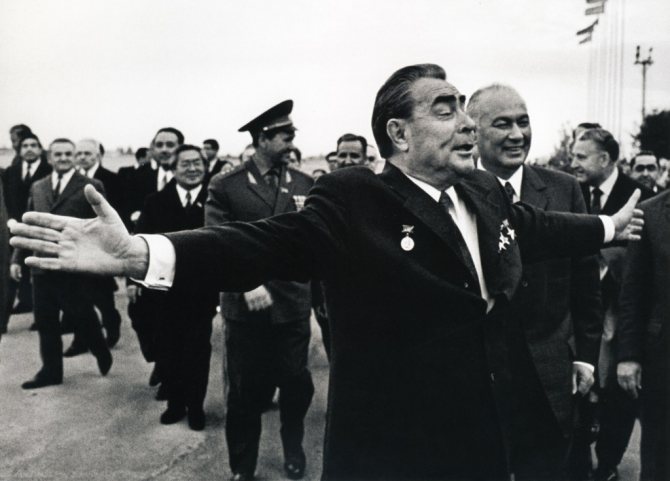
The role of the Soviet pension as a state old-age benefit continued under Brezhnev. The country was developing, getting richer, and it was possible to afford to switch to a five-day week, raise pensions and salaries, introduce benefits for veterans, and so on.
During all these years, there was a gradual equalization of the amount of pensions for collective farmers, in order to bring it closer to the pension provision of workers and employees.
What was the size of the pension in the USSR by year? Find out in this article.
Pension payments in the 80s
During this period, the number of citizens of retirement age in the USSR increased greatly. Despite this, the government continued to provide them with funds on time, taking into account the level of inflation. The average pension amount in those days was about 67 rubles.
Pension payments in 1985
At this time, due to the impact of inflation and improving living standards, pension payments in the country became maximum, amounting to 72 rubles. Let us note that collective farm participants were paid significantly less money than city residents - an average of 47 rubles.

Over time, pensions increased
Average pension
Over the entire existence of the Soviet Union, the volume of the average pension has undergone significant adjustments. The basis was not only the level of inflation, but also a significant increase in the standard of living of the country's population.
In the early 70s, the average amount of pension payments reached 34 rubles, but after 16 years the number increased to 76.
By the way! In general, the pension in those days was generally similar to the money that citizens of retirement age receive now.
Largest pension
As we have already found out, the largest pension under the Soviet Union was 120 rubles. It was provided to city residents working in the field of intellectual activity: engineers, doctors, teachers. Of course, such money was given out for working a sufficient amount of time.
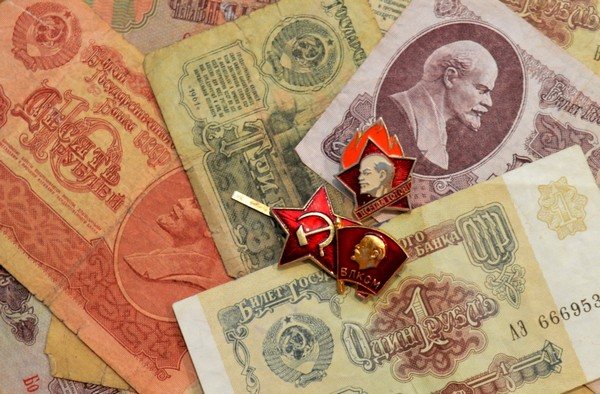
The highest old-age pension in the USSR was 120 rubles, but there were also various allowances
Pensions in the USSR and now
Typically, residents of our country calmly accept the ideas of their bosses, but the idea of late retirement does not impress them at all. The number of people willing to work into old age is small. This is only 9% of the population. In other words, citizens are not at all inspired by this prospect. And even propaganda from media personalities will not improve the attitude of citizens towards the looming increase in the retirement age.
Like many other things, we inherited the pension system from Joseph Stalin. In the USSR, pension payments for industrial workers (and not all) began to be issued since 1932. At the same time, the retirement age for men was set at 60 years. But life expectancy at that moment did not reach 50. The Soviet Union under Stalin was a fairly young country, so Stalin promised pensions to workers on communist construction projects, showing that collective farms were no longer relevant - there were no pension payments there, and there was not enough money. If you didn’t want to work on a collective farm, you could go to the army, and then to a factory. Let us note that working at the factory, in addition to providing money in old age, promised a significant privilege in the future - reservation from conscription into the army if martial law suddenly came to the country.

Back in the USSR, the retirement age was determined: for men - 60 years, for women - 55
Those who ruled the country after him had to fulfill the promises made by Stalin regarding pensions. Only by 1956 did all workers and employees of the country have a legislatively confirmed right to state support in old age - previously the provision of this money was extremely limited.
Participants in collective farms began to receive help only after 10 years, and their pensions were tiny: from 12 to 20 rubles. An important part of the pension for collective farmers was the money collected from the people themselves. In rare cases, funds from the budget could be allocated. Note that until the age of 71, the right to a pension was granted to men over 65 years of age.

Members of collective farms tended to have lower pensions
The pension payments themselves were not pleasing with their size. However, by the mid-70s, the country's leadership was forced to make a significant political decision. People who participated in the war were retiring - the generation that expected wonderful communism and a generally “rosy future” by the 1980s. The natural question was: how can they survive in old age if there is no support from the state?
By the way! This category of citizens, or rather, a certain part of it, began to be paid pensions similar to the average earnings of 120 rubles.
By 1981, the number of citizens of retirement age was 27 million—that’s 10% of the country’s total population. However, at the moment there are 43 million pensioners in the country, and this figure continues to grow. As a percentage, this is more than a quarter of all residents. Pension Fund expenses are only half compensated by insurance premiums - the other applies to budget transfers. If the retirement age is not raised, the budget will not be able to pay even the small pensions that are currently established - this is what the government believes. But increasing the retirement age will make it possible to continue payments even in small amounts.
Pension of deputies from the people
In 1989, the highest authority was people's deputies, holding congresses to clarify important issues relating to the state. The last time this happened was September 5, 1991. This date is symbolic in that the deputies decided to dissolve themselves. Today, most of these deputies have retired. The State Duma raised the problem of the need to increase pensions for this subgroup of people.
By the way! Now the total number of people who were former people's deputies is about 285 people.

People's deputies, according to the government, should receive high pensions
The Ministry of Labor and Social Protection proposes to set the pension amount at 200 thousand rubles. The reason for this proposal is the abolition of personal pension payments for this category of people, on the basis of which deputies from the people and members of their families had the right to decent material security.
Benefits for pensioners
In the USSR, a number of socialist achievements and benefits for pensioners actually existed: they had the right to subsidized medicines, various food and manufactured goods packages at special prices, and subsidies for housing and utilities. In addition, they had cheap medicine and transportation, free medical care, as well as preferential sanatorium and resort treatment. Well, everyone could get the notorious 6 acres.
We can safely say that the most meager pension of 34 rubles in the 80s is equal to approximately 6,000 rubles in modern terms. And this does not take into account the other social benefits listed above, which make up the lion’s share of the expenses of modern Russian pensioners. So, we can conclude when pensioners lived better. And what do you think?
Pension Law
The main law in the Soviet Union responsible for the problems of crediting pensions is the law “On State Pensions”, dated July 14, 1956. The document discusses the nuances of the maximum retirement age, length of service and average pension, as well as much more.
Most of the data in the bill is no longer relevant, but the reform created in 1956 provided citizens of retirement age with good money at that time. The inflation rate was not taken into account, since the cost of various goods was constantly increasing. So the reform was subject to frequent corrections.
By the way! Even now, the government is going to radically change the pension system, allowing people to independently influence the size of their own pension.

Pension reform in the USSR was regularly improved
Old people are not welcome
Elderly people were respected by Soviet society due to their complex and long life path since the 1930s. Immediately in the years after the revolution, old people - often women - were considered, according to M. Romashova, backward and stuck in everyday life, people not particularly needed by society.
By the way! Historians explain: an old man evoked associations with imminent death. And no one enjoys thinking about death. Once upon a time, youth and old age were not considered something natural, and young people did not think at all about the fact that they themselves would someday be elderly. Nobody respected old age.
As we have already found out, the pension payment system in the Soviet Union took a very long time to come into decent shape. In 1818, on the basis of a decree of the Council of People's Commissars of the RSFSR, social benefits were provided to people who did not have a basic income or a certain share of it due to the loss of the ability to perform labor duties or lack of work. In other words, it was talking about unemployment benefits or a disability pension.

Initially, pensions were quite small
During the 1920s, other groups of people who were entitled to social benefits slowly began to appear. For example, in 21, “elderly and disabled teachers who have merit in public education” could count on an increase in pension payments. Over time, pensions also appeared for military personnel who lost the opportunity to perform official duties during hostilities, and in 29, material support “reached” some categories of employees: workers in the mining, metallurgical and electrical industries, railway and water transport. Here you can come across already known figures: financial support in old age was provided to men from the age of 60, and to women from the age of 55. The work experience had to be 25 and 20 years, respectively.
By the way! Article twelve, “Regulations on pensions and social insurance benefits,” enshrined in a resolution of the Council of People’s Commissars in 1930, had a huge impact on pensions in the Soviet Union. Based on this article, employees of state enterprises had the right to an old-age pension. It is worth noting that, despite the predominance of the agricultural industry in the country at that time, participants in collective farms were not provided with a pension at all. However, in 1935 the situation changed.

You had to have a work experience of 25 years (for men) and 20 years (for women)
How did pension provision happen? To begin with, let's say that at that time there were no pension funds. This was done by a specific company. On collective farms, after discussion, management established a special fund and a mutual aid fund.
It is important to realize that the collective farm budget was mainly intended for what is needed here and now, so often the elderly citizens of the collective farm did not hold this money in their hands. They were paid their pensions in “kind” form: grain, hay, firewood, and the like. This kind of support was not yet considered mandatory. Therefore, on successful collective farms, old people lived well, but on weak ones, their standard of living left much to be desired.
USSR pension system under Khrushchev
It was during this period of time that important changes occurred in the country's pension history.
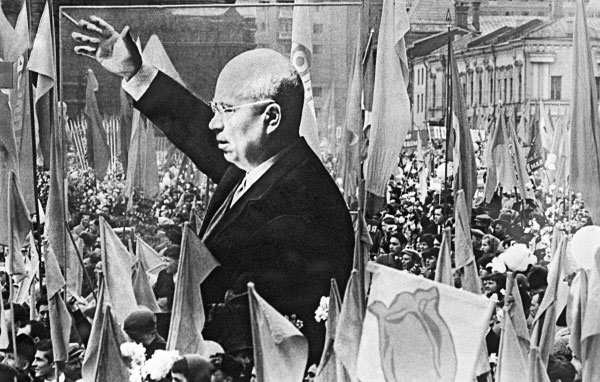
Completion of the formation of the pension system
This happened in 1956. The state, through a law adopted by the Supreme Soviet of the USSR, guaranteed its citizens material security in old age - a pension.
In essence, the law confirmed the basic parameters that had functioned before, but something was added. Thus, the list of jobs that gave the right to earlier retirement was expanded.
This included the following categories:
- Women who have given birth to 5 children or more.
- People who have worked in the Far North (with 15 years of experience) and those equivalent to them (with 20 years of experience);
- Some categories of disabled people, including WWII disabled people.
The Soviet pension system managed without the Pension Fund. Contributions were transferred by enterprises directly to the budget, and pensions were paid from them.
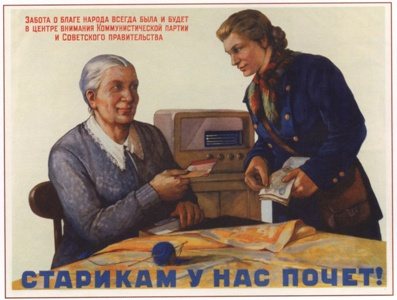
This was absolutely logical for the socialist state: since it took upon itself the responsibility to provide pensioners with old age, this was done directly, without any additional costs, reassignments or redirections of execution.
Under socialism, this is the way it is - uniform grounds for receiving a pension, uniform requirements for length of service, a uniform procedure for calculating pensions.
It should be noted that at this time a minimum pension was introduced, essentially a social one, which was established for those with insufficient work experience or for those who did not work at all.
In addition, various bonuses were awarded for additional experience beyond the mandatory:
- an extra 10 years of experience, that is, 35 years worked for men and 30 for women, gave a 10% increase in pension; the same increase was accrued for continuous work experience of 15 years or more;
- if a person worked an extra 10 years, of which 25 years in one place, then his pension increased by 20%.
Frequent job changes were not encouraged in the Soviet Union. It was believed that such a worker, since he runs from place to place, is either selfish or irresponsible.
The enterprise encouraged labor dynasties who perceived their native enterprise as a second home and treated it with respect, care and responsibility.
Continuous work experience was also valued, when an employee, changing jobs, managed to do this within a month. This trend is reflected in benefits for pensions based on length of service.
Collective farmer's pension
The previous practice, when collective farm artels were responsible for pension provision, ended in 1964, when the USSR Law “On Pensions and Benefits for Collective Farm Members” was adopted.
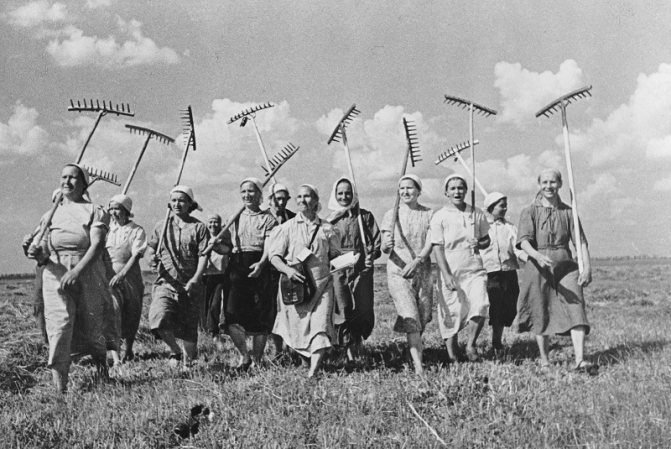
The state has now undertaken to provide for the old age of collective farmers, according to generally accepted criteria.
The calculation was carried out using different formulas, as a result the pension was lower than for urban residents. At the same time, by a special resolution of the USSR Council of Ministers, collective farms were given the right, in addition to the state pension, to retain in force their payments, those that they had previously accrued to collective farm members. This issue was left to local discretion.
Pensions were not taken away or reduced from workers who went to work after retirement. However, the specialist did not have the right to do this; he was obliged to choose one thing - either a pension or a salary. This restriction did not apply only to those areas where there was a shortage of such specialists. For example, there were often shortages of doctors, so in medicine, retired doctors received both.
Interesting Facts
Pensions in the Soviet Union are often described in two terms.
Positive : any citizen of retirement age in the USSR received support in the amount of 100-120 rubles every month.
Negative : citizens of retirement age under the Soviet Union lived very sadly: literally on 15 rubles a month. To be fair, let's say that both of these opinions are fair.

The size of the pension in the USSR is now assessed differently by people
The amount of the pension in those days was related to salary. For example, if a woman worked as a cleaner, then in retirement she will be paid about 80 rubles. An experienced specialist was paid about 130 rubles. The respected Bolshevik had the right to be provided with a personal pension of Union significance, amounting to 300 rubles. If a citizen did not work enough time, he had the right to receive a social pension - 35 rubles. This figure is considered the minimum for the USSR. We can conclude that the average pension amount in the USSR reached approximately one hundred rubles.
Citizens living in villages were provided with pension payments that were 15% less than workers and employees. Thus, the largest amount is 102 rubles, and the smallest is 34. However, village residents had their own privileges over city residents. The first received pension money in full, regardless of the amount of earnings. And for the second, income could not exceed a certain number. If the threshold was exceeded, the pension was reduced by the amount of the difference.
Old-age pensions were issued on a general basis to the male population aged 60 years and over, and to the female population from 55 years old. It was necessary to work for 25 and 20 years, respectively.

Of course, the size of the pension largely depended on the position of the citizen and his work experience
An old-age pension was issued if a person did not work the required time, and also:
- he reached retirement age while performing his job duties;
- he has worked for a total of at least five years;
- before retiring, he worked for at least three years;
- he applied for a pension no later than one month from the date of completion of work. Please note that there are no allowances for such pension payments.
So, the pension payment system in the USSR is in many ways similar to the one that exists now in modern Russia. The amount of payments largely depends on the employee’s length of service, his salary, and for special merits or residence in the Far North, you can receive various allowances and privileges.
Collective farmers' pension
Firstly, collective farmers were paid pensions in the USSR until the 60s (it is believed that before this the villagers did not receive them at all). Since 1935, pensions for collective farmers were paid by the collective farms themselves. And indeed, it was only in the 60s that unified state pensions were established for all collective farmers. They were much more modest than urban ones, 15% smaller. The maximum pension for a collective farmer was 102 rubles, and the minimum was only 34 rubles (the same ones). But the villagers had a farm, which meant additional sources for life. This is what those in power proceeded from when assigning pensions.


